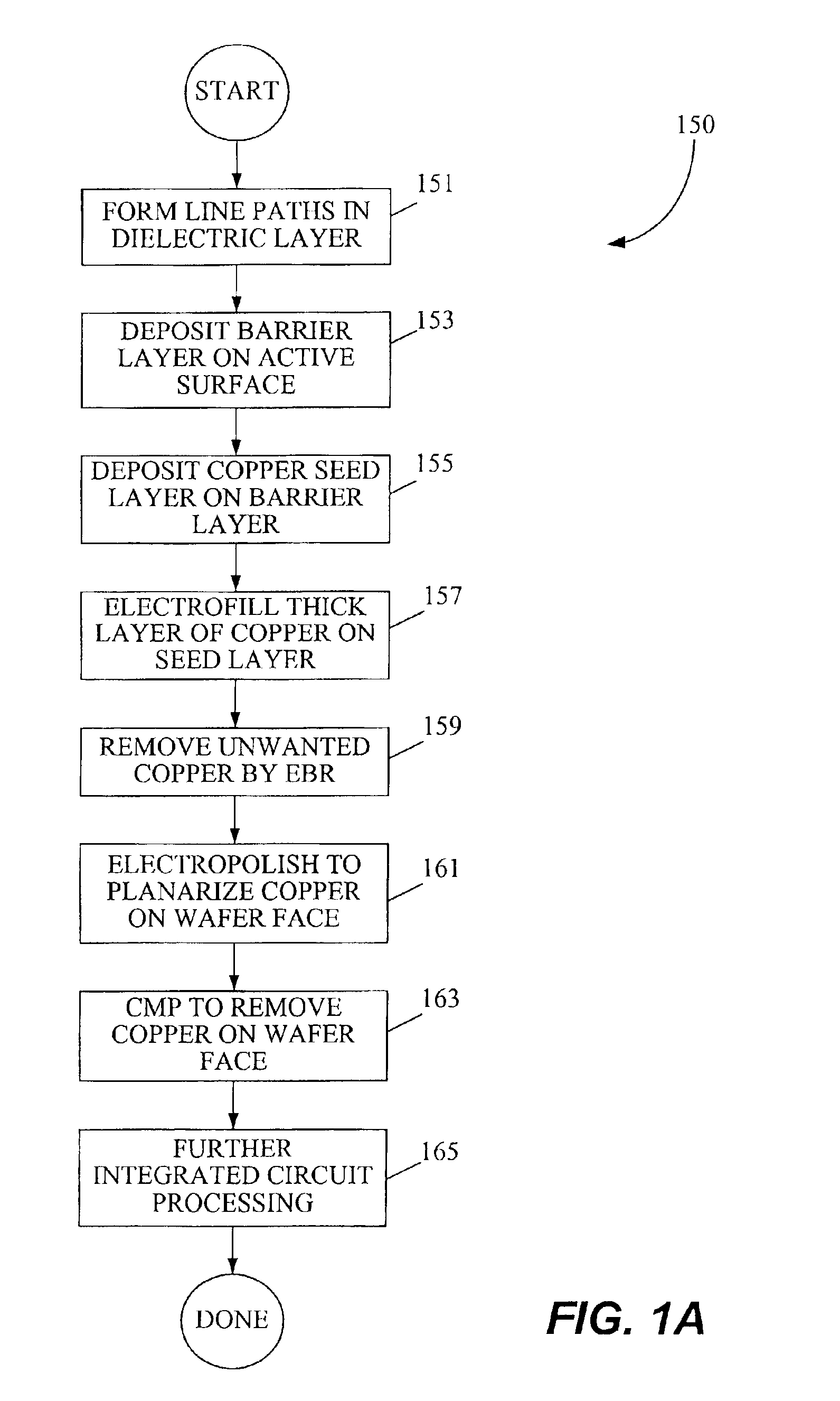Copper electroplating method and apparatus
- Summary
- Abstract
- Description
- Claims
- Application Information
AI Technical Summary
Benefits of technology
Problems solved by technology
Method used
Image
Examples
example
[0115
[0116]FIG. 6 shows the comparative rate of additive concentration under similar bath conditions and currents for a Sabre™ tool (electroplating system available from Novellus Corporation of San Jose, Calif.). The lower line presents data obtained from a single bath reservoir for the anode and cathode electrolytes. The upper line presents data obtained from a small test cell (scaled version of the Sabre tool) with a ceramic separator placed between an anode chamber containing plating bath without organic additives and a plating chamber containing additive. Shipley Ultrafill™ was the bath chemistry used in both cases. At the beginning of the process, the concentration of acid and copper were the same in both the anolyte and catholyte chambers. The copper ion concentration was 18 g / l and the concentration of sulfuric acid was 180 g / l. The results show a 2 to 3 fold reduction in the rate of breakdown of accelerator material.
[0117]Other Embodiments
[0118]While this invention has been ...
PUM
| Property | Measurement | Unit |
|---|---|---|
| Composition | aaaaa | aaaaa |
| Flow rate | aaaaa | aaaaa |
| Concentration | aaaaa | aaaaa |
Abstract
Description
Claims
Application Information
 Login to View More
Login to View More - R&D
- Intellectual Property
- Life Sciences
- Materials
- Tech Scout
- Unparalleled Data Quality
- Higher Quality Content
- 60% Fewer Hallucinations
Browse by: Latest US Patents, China's latest patents, Technical Efficacy Thesaurus, Application Domain, Technology Topic, Popular Technical Reports.
© 2025 PatSnap. All rights reserved.Legal|Privacy policy|Modern Slavery Act Transparency Statement|Sitemap|About US| Contact US: help@patsnap.com



